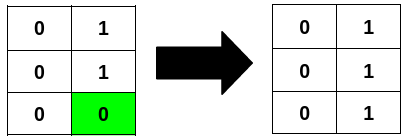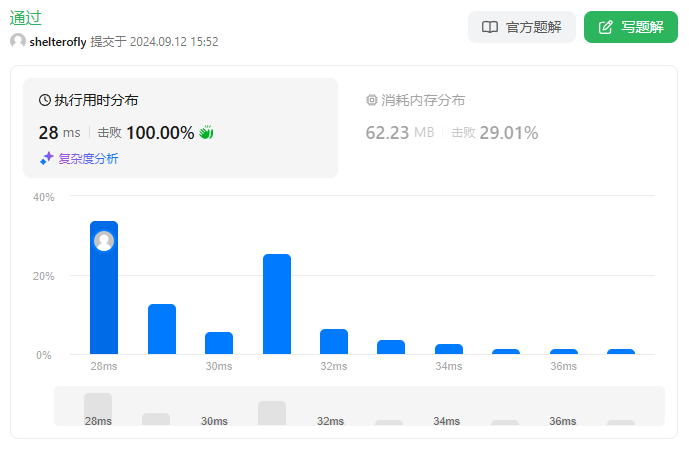目标
给你一个 m x n 的二进制矩阵 grid 。
如果矩阵中一行或者一列从前往后与从后往前读是一样的,那么我们称这一行或者这一列是 回文 的。
你可以将 grid 中任意格子的值 翻转 ,也就是将格子里的值从 0 变成 1 ,或者从 1 变成 0 。
请你返回 最少 翻转次数,使得矩阵 要么 所有行是 回文的 ,要么所有列是 回文的 。
示例 1:

输入:grid = [[1,0,0],[0,0,0],[0,0,1]]
输出:2
解释:
将高亮的格子翻转,得到所有行都是回文的。示例 2:

输入:grid = [[0,1],[0,1],[0,0]]
输出:1
解释:
将高亮的格子翻转,得到所有列都是回文的。示例 3:
输入:grid = [[1],[0]]
输出:0
解释:
所有行已经是回文的。说明:
- m == grid.length
- n == grid[i].length
1 <= m * n <= 2 * 10^50 <= grid[i][j] <= 1
思路
有一个二进制矩阵 grid,每次操作可以翻转任意格子,使 0 变为 1,或者使 1 变为 0。求使得矩阵 所有行 或者 所有列 变成回文的最少操作次数。
由于是所有行 或 所有列,每种情况下的翻转次数是确定的,直接返回其最小值即可。
优化点:
- 使用
⌊n/2⌋缩小循环范围,使用n - 1 - j代替尾部指针 - 是使用异或运算代替条件判断
代码
/**
* @date 2024-11-15 9:05
*/
public class MinFlips3239 {
public int minFlips(int[][] grid) {
int rowOpts = 0;
int colOpts = 0;
int m = grid.length;
int n = grid[0].length;
for (int i = 0; i < m; i++) {
for (int j = 0; j < n / 2; j++) {
rowOpts += grid[i][j] ^ grid[i][n - 1 - j];
}
}
for (int i = 0; i < n; i++) {
for (int j = 0; j < m / 2; j++) {
colOpts += grid[j][i] ^ grid[m - j - 1][i];
}
}
return Math.min(rowOpts, colOpts);
}
}
性能








